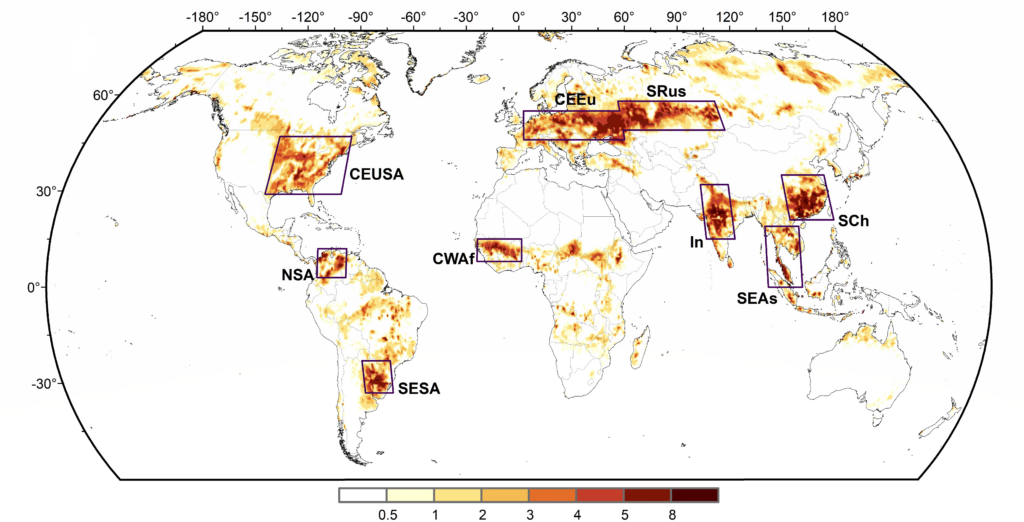
CISESS Deputy Director and ESSIC Research Professor Ernesto Hugo Berbery is a co-author on a new paper in npj Climate and Atmospheric Science, a Nature Research journal, that examines agricultural flash droughts worldwide and reveals their characteristics and life cycle.
The study introduces a flash drought indicator based on soil water availability, which can show rapid depletion rates of soil moisture in the root zone and their impact on vegetation health. The researchers’ findings reveal that agricultural flash droughts occur more frequently during the critical growth periods of crops and exhibit a similar life cycle regardless of the climatic regime. A precipitation deficit is the primary cause of the rapid soil moisture depletion, but evapotranspiration also plays a significant role. In an energy-limited environment, evapotranspiration increases rapidly before the onset and decreases rapidly during the intensification period as the system becomes water-limited. After the intensification period, most crops experience water stress, leading to lower yields.
Berbery is a Fellow of the American Meteorological Society and has research interests in regional hydroclimate variability, monsoon systems and land surface-atmosphere interactions.
To access the paper, click here: “The prevalent life cycle of agricultural flash droughts”.
To read the SpringerNature press release, click here.





